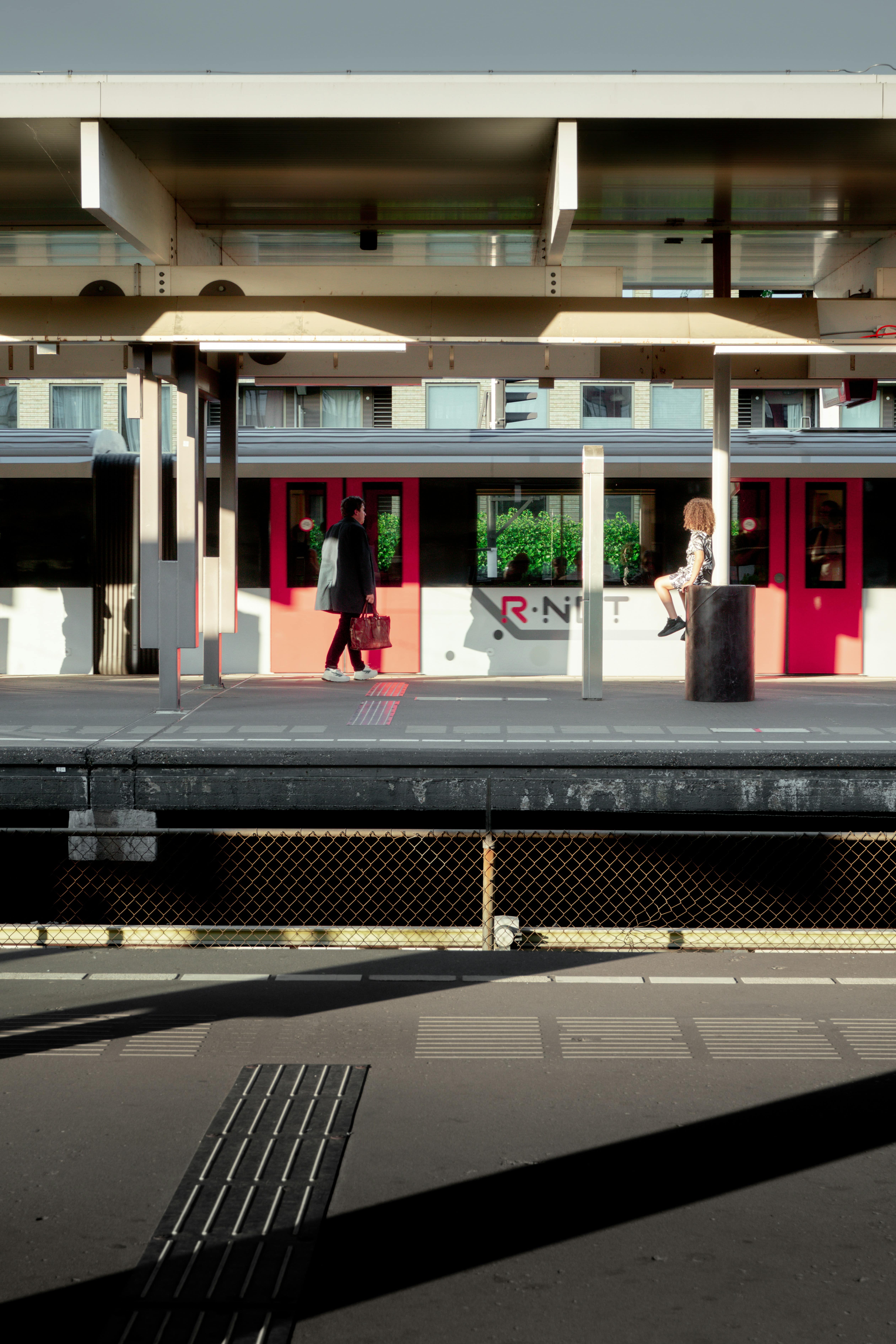Designing for the Metaverse: What You Need to Know
Jun 1, 2024
What is the Metaverse?
The metaverse is a concept that envisions a fully immersive, interconnected digital universe where users can interact with each other and digital environments in real-time. Unlike the traditional internet, which is primarily text and image-based, the metaverse aims to provide a more immersive and interactive experience, often through virtual reality (VR), augmented reality (AR), and other advanced technologies.
Key Components of the Metaverse
1. Virtual Reality (VR) and Augmented Reality (AR)
At the heart of the metaverse are VR and AR technologies. VR creates a completely immersive digital environment, allowing users to experience and interact with a virtual world as if they were physically present. AR, on the other hand, overlays digital information onto the physical world, enhancing real-life experiences with virtual elements. Together, these technologies form the backbone of the metaverse, enabling rich and interactive experiences.
2. 3D Worlds and Environments
The metaverse is characterized by expansive 3D worlds where users can explore, create, and interact. These virtual environments can range from realistic recreations of physical spaces to entirely fantastical landscapes. The design and development of these 3D spaces involve advanced modeling and rendering techniques to create engaging and immersive worlds.
3. Digital Avatars
Avatars are digital representations of users within the metaverse. They allow individuals to express themselves and interact with others in the virtual space. Avatars can be highly customizable, reflecting personal preferences and identities. The development of sophisticated avatar systems involves not only visual design but also functionality to ensure seamless interaction within the metaverse.
4. Social Interaction
One of the core aspects of the metaverse is its emphasis on social interaction. Users can connect with others in real time, participate in virtual events, collaborate on projects, and build communities. This social dimension is crucial for creating a sense of presence and engagement in the metaverse.
5. Economy and Digital Assets
The metaverse is also expected to feature its economy, where users can buy, sell, and trade digital assets. This includes virtual real estate, digital goods, and services. Blockchain technology is often utilized to ensure secure transactions and ownership of these assets, adding a layer of transparency and trust to the digital economy.
Applications and Use Cases
1. Gaming and Entertainment
Gaming is one of the most prominent applications of the metaverse. Virtual worlds and immersive environments offer new opportunities for gameplay, storytelling, and user-generated content. The metaverse allows for expansive, interactive gaming experiences that go beyond traditional game boundaries.
2. Education and Training
The metaverse has significant potential in education and training. Virtual classrooms and simulation environments can provide interactive learning experiences, allowing students and professionals to engage in hands-on training and collaboration in a virtual setting.
3. Social and Professional Networking
The metaverse offers new ways to connect and collaborate. Virtual conferences, meetings, and social gatherings can bring people together from around the globe, providing a more immersive and engaging alternative to traditional online communication.
4. Retail and Commerce
Virtual shopping experiences are becoming increasingly popular in the metaverse. Brands are exploring ways to create virtual stores where users can browse and purchase digital and physical products. This new retail frontier allows for innovative marketing and customer engagement strategies.
Challenges and Considerations
1. Privacy and Security
As with any digital space, privacy and security are major concerns. Ensuring that user data is protected and that interactions within the metaverse are secure is crucial for building trust and maintaining a safe environment.
2. Interoperability
For the metaverse to reach its full potential, different virtual worlds and platforms need to be interoperable. This means that users should be able to move seamlessly between different environments and carry their digital assets across platforms.
3. Accessibility and Inclusivity
Designing for inclusivity is essential to ensure that the metaverse is accessible to people of all abilities. This includes considering diverse user needs and providing features that enhance accessibility and usability.
Conclusion
Designing for the metaverse requires a deep understanding of its unique characteristics and an ability to adapt traditional design principles to a virtual environment. By focusing on immersive 3D modeling, intuitive interactions, customizable avatars, and inclusive design practices, designers can create compelling and engaging experiences within this new digital realm. Embracing emerging technologies and staying abreast of industry trends will further enable designers to push the boundaries of creativity and innovation in the metaverse.
1. Dark Mode Everywhere
Dark mode has surged in popularity over the past few years, and its dominance is set to continue in 2024. Offering a sleek, modern aesthetic, dark mode reduces eye strain and conserves battery life on OLED screens. Web designers are increasingly incorporating dark mode options into their designs, providing users with a choice between light and dark themes. The challenge lies in ensuring that dark mode designs maintain readability and accessibility, particularly for those with visual impairments.
2. Immersive 3D Visuals
Advancements in web technologies like WebGL and CSS3 have made it easier to integrate 3D elements into web designs. In 2024, expect to see more websites leveraging 3D visuals to create immersive experiences. From product showcases to interactive storytelling, 3D elements can captivate users and provide a more engaging way to interact with content. Designers must balance visual appeal with performance, ensuring that 3D elements do not hinder site loading times.
3. Microinteractions for EThe world of web design is ever-evolving, shaped by technological advancements and changing user preferences. As we navigate through 2024, several trends are emerging that promise to transform the way we approach web design. Here’s a look at some of the most exciting developments to watch out for this year.nhanced User Engagement
Microinteractions—subtle, often overlooked animations or responses triggered by user actions—are becoming a cornerstone of modern web design. These small details, such as a button changing color when hovered over or a notification badge appearing, contribute significantly to the overall user experience. In 2024, expect to see more thoughtful and creative use of microinteractions to guide users, provide feedback, and add a layer of delight to web interactions.
4. Voice User Interfaces (VUIs)
As voice assistants like Siri, Alexa, and Google Assistant become more integrated into daily life, the demand for voice user interfaces (VUIs) is growing. VUIs allow users to interact with websites using voice commands, making web experiences more accessible and convenient. Web designers need to consider how voice interactions can complement traditional touch and click interactions, providing a seamless multi-modal experience.
5. Augmented Reality (AR) Integration
Augmented reality (AR) is making its way into web design, offering users interactive and immersive experiences without the need for additional apps. AR can be used for various purposes, from virtual try-ons in e-commerce to interactive educational content. In 2024, more websites will experiment with AR to enhance user engagement and provide unique value propositions.
6. Sustainable Web Design
With growing awareness of environmental issues, sustainable web design is gaining traction. This approach focuses on reducing the carbon footprint of websites by optimizing performance, minimizing resource use, and choosing green hosting providers. Designers are increasingly prioritizing lightweight, efficient code and leveraging tools to measure and reduce the environmental impact of their web projects.
7. Personalized User Experiences
Personalization has been a buzzword in web design for years, but 2024 is set to take it to new heights. Advances in AI and machine learning enable websites to deliver highly tailored experiences based on user behavior, preferences, and past interactions. From dynamic content adjustments to personalized product recommendations, these technologies are helping create more relevant and engaging user experiences.
8. Minimalist Navigation
Simplified navigation is becoming more prevalent as designers strive to create user-friendly and intuitive web experiences. Minimalist navigation reduces cognitive load and makes it easier for users to find what they’re looking for quickly. Expect to see more hidden menus, streamlined navigation bars, and clear, concise labeling in 2024.
9. No-Code and Low-Code Platforms
The rise of no-code and low-code platforms is democratizing web design, allowing those without extensive coding knowledge to create and manage websites. These platforms provide drag-and-drop interfaces and pre-built components, making it easier to develop and iterate on web projects. As these tools become more sophisticated, they will continue to empower a broader range of people to contribute to web design.
10. Enhanced Data Visualization
As data becomes increasingly central to decision-making, the demand for effective data visualization on the web is growing. Designers are finding new ways to present complex information in clear, digestible formats. Interactive charts, graphs, and infographics are being used to tell compelling stories with data, making it more accessible and engaging for users.
Conclusion
The future of web design in 2024 is filled with exciting possibilities. By embracing these trends, designers can create innovative, user-friendly, and engaging web experiences. Whether it's through the adoption of dark mode, the integration of 3D visuals, or the use of AI for personalization, staying ahead of these trends will be key to delivering cutting-edge designs that resonate with users. As always, the challenge lies in balancing creativity with functionality, ensuring that designs are not only visually appealing but also accessible, performant, and sustainable.



